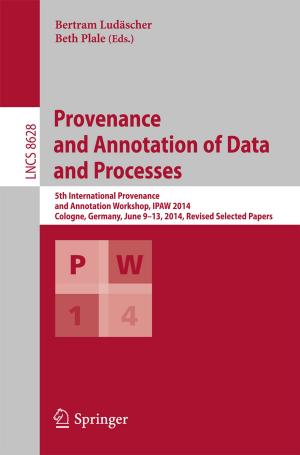Rail Transport—Systems Approach
Nonfiction, Science & Nature, Technology, Engineering, Civil, Computers, Advanced Computing, Artificial Intelligence| Author: | ISBN: | 9783319515021 | |
| Publisher: | Springer International Publishing | Publication: | March 8, 2017 |
| Imprint: | Springer | Language: | English |
| Author: | |
| ISBN: | 9783319515021 |
| Publisher: | Springer International Publishing |
| Publication: | March 8, 2017 |
| Imprint: | Springer |
| Language: | English |
This book shows how the systems approach is employed by scientists in various countries to solve specific problems concerning railway transport. In particular, the book describes the experiences of scientists from Romania, Germany, the Czech Republic, the UK, Russia, Ukraine, Lithuania and Poland. For many of these countries there is a problem with the historical differences between the railways. In particular, there are railways with different rail gauges, with different signaling and communication systems, with different energy supplies and, finally, with different political systems, which are reflected in the different approaches to the management of railway economies. The book’s content is divided into two main parts, the first of which provides a systematic analysis of individual means of providing and maintaining rail transport. In turn, the second part addresses infrastructure and management development, with particular attention to security issues. Though primarily written for professionals involved in various problems concerning railway transport, the book will also benefit manufacturers, railway technical staff, managers, and students with transport specialties, as well as a wide range of readers interested in learning more about the current state of transport in different countries.
This book shows how the systems approach is employed by scientists in various countries to solve specific problems concerning railway transport. In particular, the book describes the experiences of scientists from Romania, Germany, the Czech Republic, the UK, Russia, Ukraine, Lithuania and Poland. For many of these countries there is a problem with the historical differences between the railways. In particular, there are railways with different rail gauges, with different signaling and communication systems, with different energy supplies and, finally, with different political systems, which are reflected in the different approaches to the management of railway economies. The book’s content is divided into two main parts, the first of which provides a systematic analysis of individual means of providing and maintaining rail transport. In turn, the second part addresses infrastructure and management development, with particular attention to security issues. Though primarily written for professionals involved in various problems concerning railway transport, the book will also benefit manufacturers, railway technical staff, managers, and students with transport specialties, as well as a wide range of readers interested in learning more about the current state of transport in different countries.















